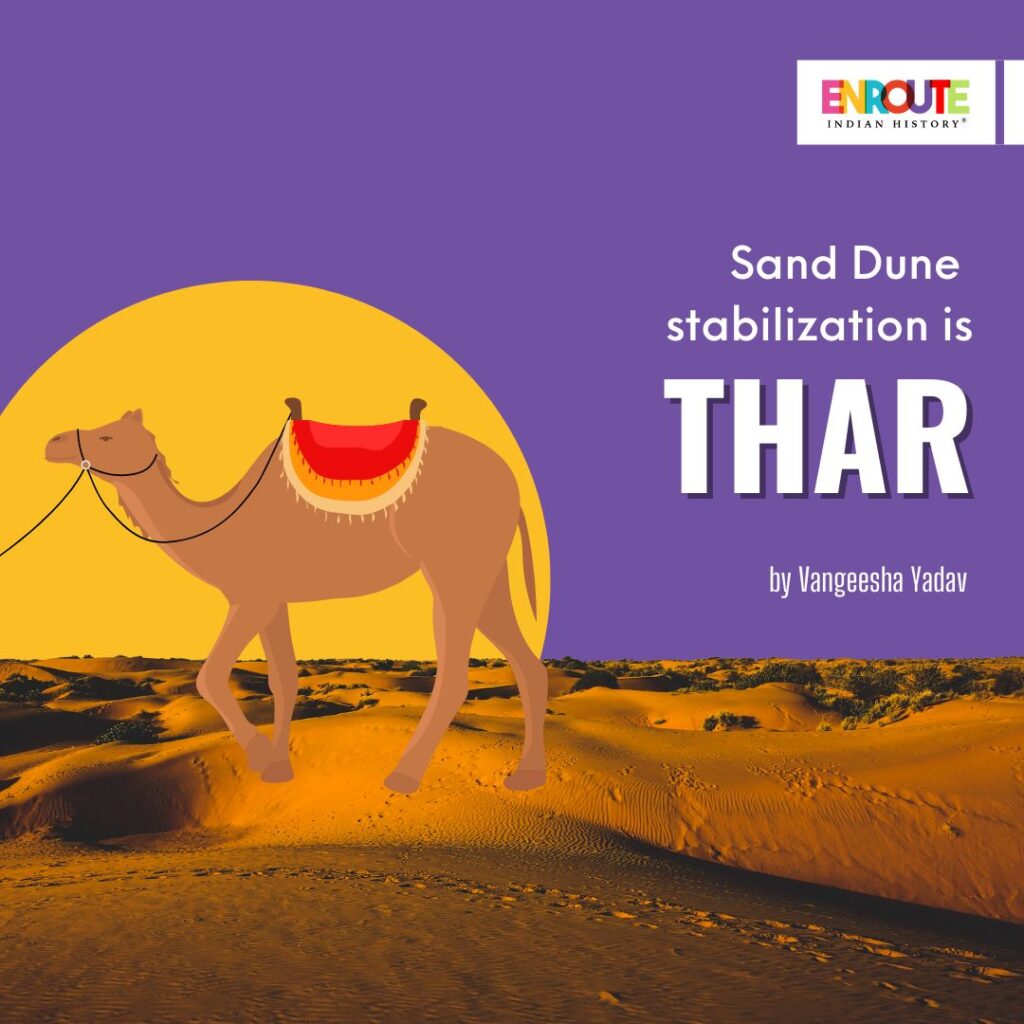
Can you imagine that it is possible to grow vegetation in a desert, sounds next to a divine miracle. Sands are loose soils, which are not fertile for anything to grow. But with certain methods, can control the environment naturally to make the growth of crops favorable.
Sand dune stabilization is the way to achieve that. Desert and coastal areas consist of sand dunes. The wind is the basic factor for the deposition and movement of sand. The purpose to stabilize sands is to keep the human settlement safe from further troubles caused by nature. In coastal areas for example, sand dunes are the first defense against oceans and due to constant human interventions, the flora and fauna has got disturbed which will make the inland settlements vulnerable to the forces of the ocean. Planting vegetation keeps the impact in check. This management in the beaches of Ratnagiri is an example of the coastal area.
Such methods have also been executed in the different regions of the Thar Desert in Rajasthan. This article will be about the geography of the desert concerning human settlements and how sand dune stabilization has brought a change in every manner.
The Thar Desert is extended widely in western Rajasthan. The soil of the Thar Desert remains dry throughout the year, so it is prone to wind erosion. High-velocity winds blow soil from the desert, depositing some of it on the nearby fertile lands. Also with the increase in human settlements- canals, wells, railways, buildings, and housing areas, the destabilized sands create huge losses. To counteract this issue, sand dunes are stabilized by adopting various controlled techniques like, the planting of shrubs and grasses that act as micro windbreakers, and also the roots help in water retention; then in some areas reducing the interruptions of humans and animals. Here are some different techniques to stabilize sand dunes.
1. RESTRICTING BIOTIC ACTIVITY THROUGH FENCING-The main problem of the whole scene is the desert, arable land, and man coming into contact. Sand dunes are the dominant form and the intensity of it differs from place to place within the desert. There will be old and new dunes, the former is suitable for vegetation. Human/biotic activity like cattle grazing would lead to the loosening of soil leading to erosion.
So to keep this in check, it is very essential to fence the area so that it keeps protected the grasses and straws as they bind the soil and prevent erosion. As per the conditions of Thar, fencing with barbed wires was found suitable. The Beechwal area in Bikaner is an example, the area is covered with shrubs and grasses like Lasiurus sindicus, Cellchrus ciliaris which has been a source of fodder and fencing has checked the biotic activities in a desirable manner.
2. PLANTING SHRUBS AND GRASSES AS MICRO-WIND BREAKERS
IN DIFFERENT PATTERNS- Fixing sand dunes is important to check the movement of sand and protect the young planted seedlings from the harsh action of the moving sand. It has been achieved by constructing checkerboards or parallel hedge systems depending upon the direction of the wind. Planting locally available shrubs are buried vertically downwards across the wind direction.
The Checkerboard method
3. AFFORESTATION ON SAND DUNES- Fixing is the foremost step in the stabilization of sands, once it is done, it becomes suitable for vegetation. So such species of trees or grasses are planted that are the right type for the climate of the desert. For example, fast-growing Khejari trees have been developed by researchers here, for this purpose.
Khejadi tree in Mustard fields
WHAT IS IT GIVING TO US?
Good economic returns Increase in human and livestock population-Efforts to sand dune stabilization has resulted in the improvement in agriculture. Farmers traditionally grow crops with the presence of perennial trees, shrubs, and grasses. For example, many surveys of the present agroforestry system have found that Khejri is often found in agricultural fields, thus forming an important part of the agroforestry system in the desert. There also have been good economic returns from the agro-pastoral system because of the availability of fodders for livestock. These all are leading to an increase in the population of humans and livestock.
But every step has cons too, and one can question whether the positive effects of sand dune stabilization might bring desertification again. The improvement in agricultural production will bring more population and livestock to settle, which will demand more land and fodder. To cater to them more resources would be required, which would be difficult, as now it is done in a very controlled way. This might again lead to desertification.
REFERENCES
1. TECHNOLOGY APPROACH FOR GREENING DEGRADED ARID LANDS by J.P Gupta http://cazri.res.in/publications/KrishiKosh/156.pdf
2. Trends in Arid zone research in India Edited by AmalKar, B.K. Garg, M.P. Singh, S. Kathju
3. Soil and water management
https://krishi.icar.gov.in/PDF/Selected_Tech/swm/26-swm-sand%20dunes%20stabilization.pdf
4. The role of Khejri in indigenous agroforestry systems of Thar Desert by Jabrinder Singh and Mukul Bishnoi
https://www.tsijournals.com/articles/the-role-of-khejri-in-indigenous-agroforestry-systems-of-thar-desert.pdf
Grammarly score – 77%
Plagiarism -0
- February 22, 2024
- 8 Min Read
- February 16, 2024
- 9 Min Read

























